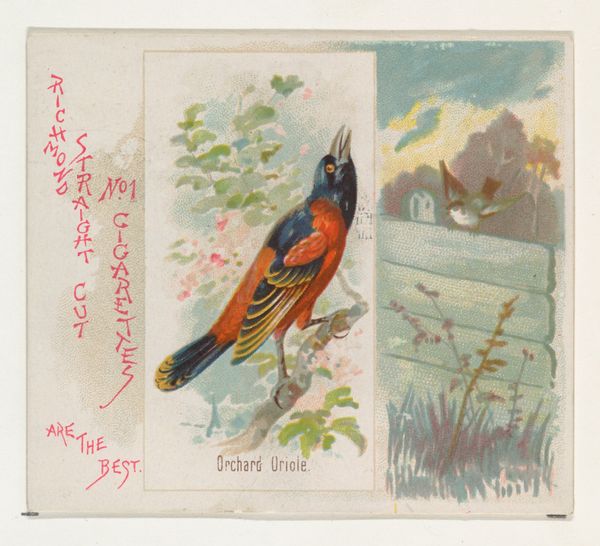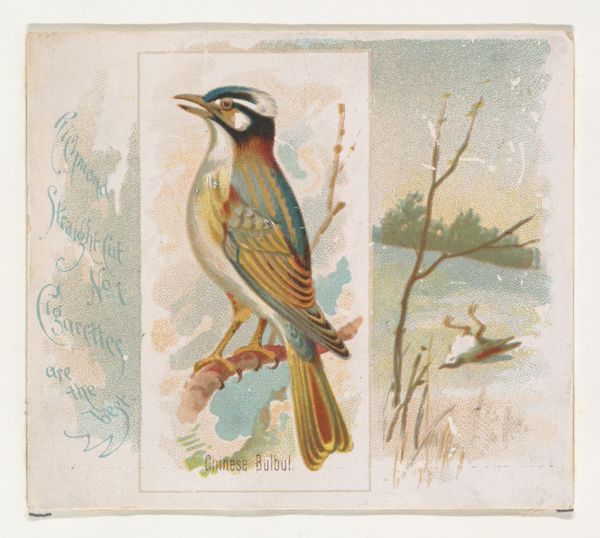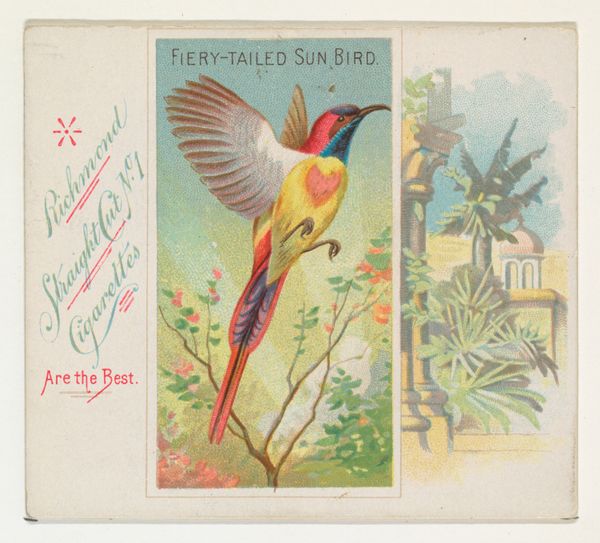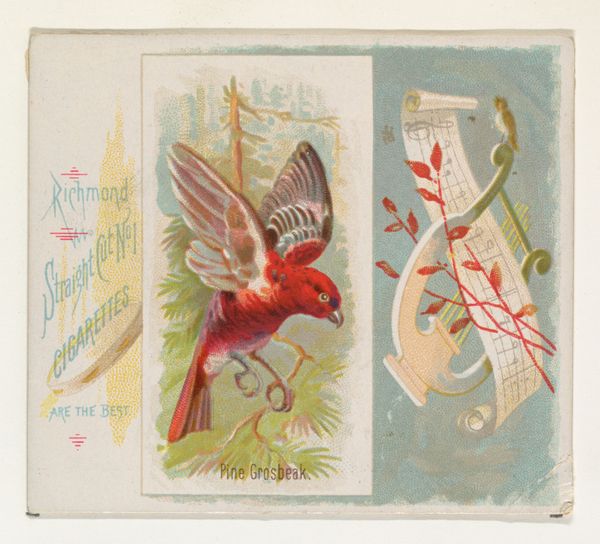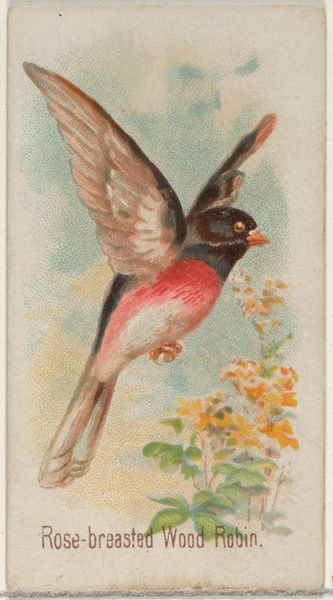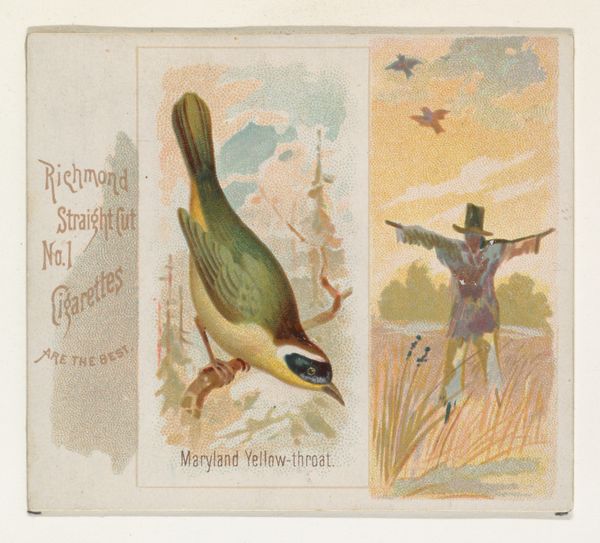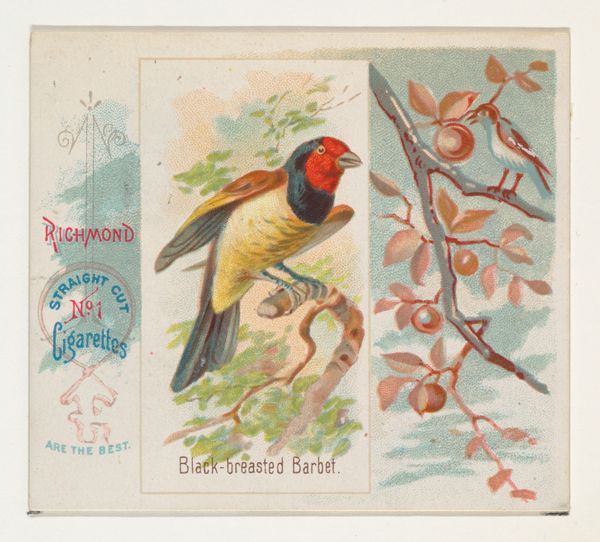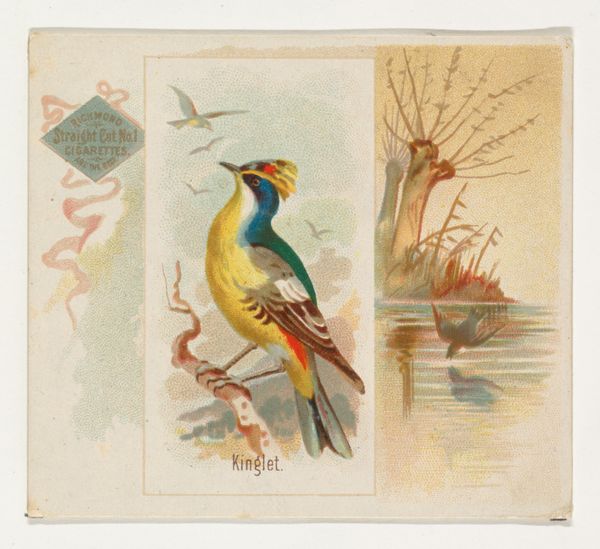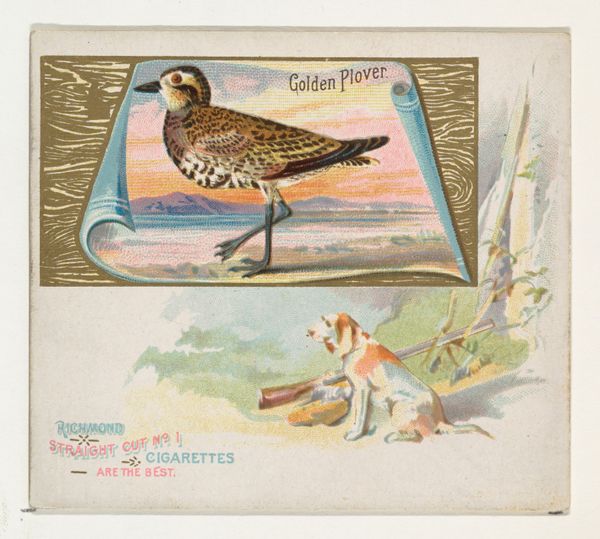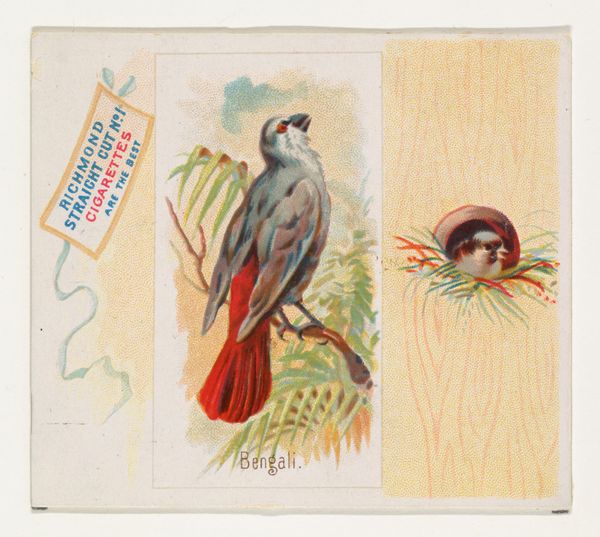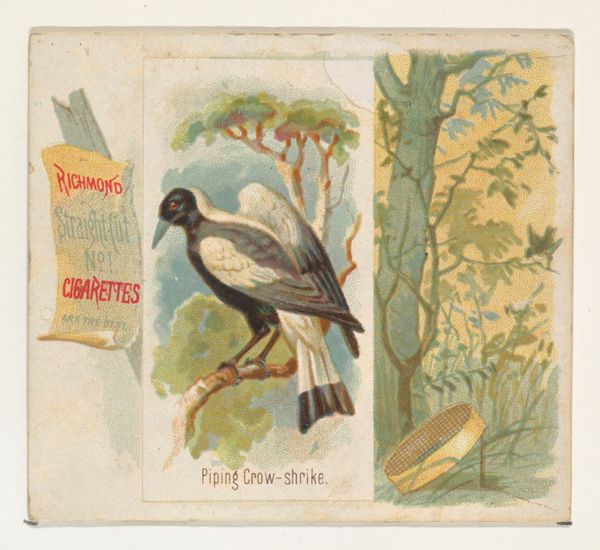
Rose-breasted Wood Robin, from the Song Birds of the World series (N42) for Allen & Ginter Cigarettes 1890
0:00
0:00
Dimensions: Sheet: 2 7/8 x 3 1/4 in. (7.3 x 8.3 cm)
Copyright: Public Domain
Editor: This is "Rose-breasted Wood Robin, from the Song Birds of the World series" made around 1890 by Allen & Ginter, using watercolor and print. It's so small and delicate, almost like a fleeting memory. I'm curious, what do you see in this piece? Curator: I see a convergence of nature, commerce, and cultural values deeply embedded in the Gilded Age. These cards, distributed with cigarettes, speak volumes about how industry co-opted scientific illustration and aesthetics for capitalist gains. Think about the act of collecting these cards – it speaks to a culture obsessed with categorizing and possessing the natural world, a reflection of imperialist ideologies that extended to both land and knowledge. How does the exoticized presentation of this "songbird of the world" reinforce hierarchies? Editor: I didn't think about it that way. The "Song Birds of the World" title implies this universal knowledge, but framed and presented from whose perspective, and at whose expense? Curator: Precisely! Consider the influence of Orientalism here; the composition, albeit subtle, draws on Ukiyo-e traditions, filtered through a Western gaze. The bird, like so many cultural elements, becomes a commodity, stripped of its original context and repackaged for consumption. Who profits from this framing, and whose voices are silenced? What narratives about labor and colonialism are masked by this beautiful imagery? Editor: That makes me reconsider the composition. What seemed like a simple, charming illustration now seems more loaded. Curator: Absolutely. Art rarely exists in a vacuum. By exploring the intersections of economics, cultural appropriation, and power dynamics within these seemingly innocuous images, we unlock a deeper understanding of the past and its echoes in our present. This piece compels us to question how consumer culture continues to shape our understanding of nature and the world around us. Editor: It’s eye-opening to see how much history and meaning can be packed into something as seemingly simple as a cigarette card. I will never see trading cards the same way. Curator: Nor should you! Engaging with art through an intersectional lens illuminates previously hidden layers of meaning and allows us to foster more critical perspectives.
Comments
No comments
Be the first to comment and join the conversation on the ultimate creative platform.
